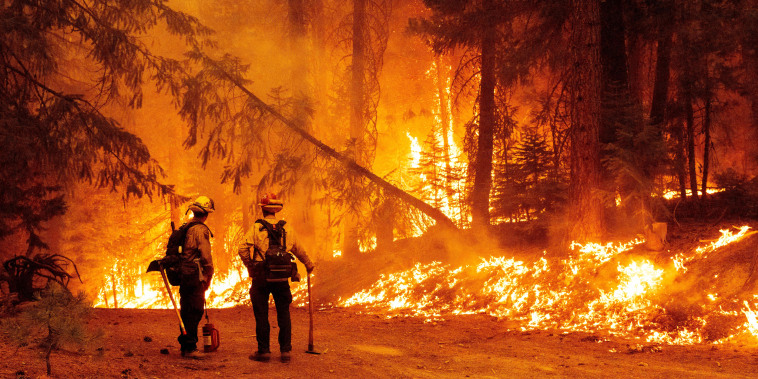Last October in a Rocky Mountain fire season without end, my son got a sorrowful message.
On a morning when the sky wore a sandpaper hue, he was in front of his apartment when something drifted from the sky and into his hand:
A charred aspen leaf.
One might have assumed it was from a fire next door, or certainly near.
Depends on what “near” is. The fire was 40 miles away in Colorado’s Poudre Canyon.
The Cameron Park Fire burned from August to December, obliterating 326 square miles of forest and 469 structures.
It was Colorado’s biggest forest fire ever. Sad to say, it is just the beginning.
Humanity rapidly is gumming up an environment that was timepiece-primed for regeneration and now is prone to disaster.
Policymakers who won’t give a second’s thought to spending military billions are balking at the price tag of climate policies that put heft behind what history will record as empty words.
President Biden is pushing for the heft. The provincial concerns of oil and coal, however, neutered an infrastructure bill designed to cut climate pollution by half by 2030 (compared to 2005 levels).
Barack Obama, whose directives in spite of a recalcitrant Congress dramatically changed how this country consumes energy, writes in his memoir “A Promised Land” of a fantasy about new priorities with the Cold War over, that this nation “put its immense power and authority behind the climate change fight.”
He imagined, in the success of such an effort, “the geopolitical benefits that would have flowed from weakening the grip of petrodollars and the autocracies supported by those dollars.”
Sure, he was thinking of Russian oligarchs and Saudi royals. He also had to be thinking of North American tar-sands empires and a coal industry that seeks a reason to be.
The autocrat who preceded Biden became president in large part by pandering to Coal Country, though fewer and fewer entities buy what it sells.
That helps explain to a great degree why that autocrat smirked and clowned around the carbon-loading causing our planet to sweat.
To be honest, forest fires, as destructive as they continue to be, are a low-priority item at the moment.
Higher up the list is the fact that the West is experiencing a thousand-year drought.
The Colorado River — the Ganges of the West — supplies water to 40 million people in six states. While populations have grown rapidly, the flow has declined 20 percent over the previous century.
Lake Mead, fed by the Colorado, is at its lowest level since it was built in the ‘30s.
National Geographic magazine had a feature in 2015 predicting this. But what were voters concerned about. Um, building a wall?
We can only imagine what Donald Trump would have to say about the mega drought and the clear connection to climate change.
He’d say our shower heads are too skimpy.
How tragic that Americans chose a clown to lead them into times like these, and that his party still thinks he says things that matter.
There was nothing to joke about last October when the section of the Rockies nearest and dearest to me was ablaze.
Speaking of that blackened leaf carried for all those miles to my son’s hand:
The species aspen is considered a natural fire break in a forest. Sometimes, however, the fire is so intense that fire breaks get broken.
This week the Poudre Canyon experienced a deadly flash flood because of earth so scorched and denuded it can’t absorb heavy mountain rains. One person is dead and three missing, and several houses are gone.
Right now a canopy of smoke extends across the country from wildfires in Oregon and Washington, reminiscent of the Black Sunday cloud that drifted all the way to our nation’s capital during the Dust Bowl.
That got Washington’s attention in 1935. What about today will get those in power to look to our tomorrow?

